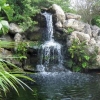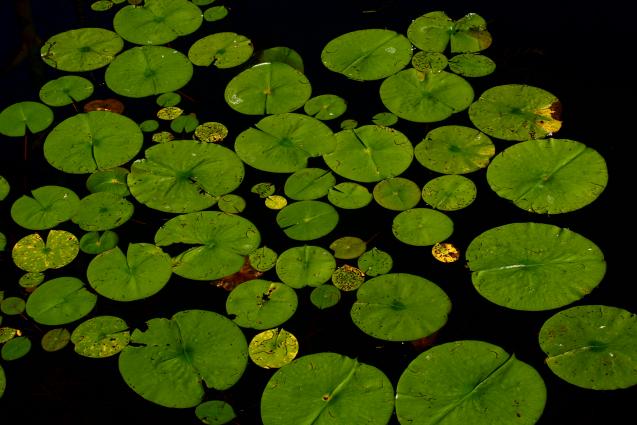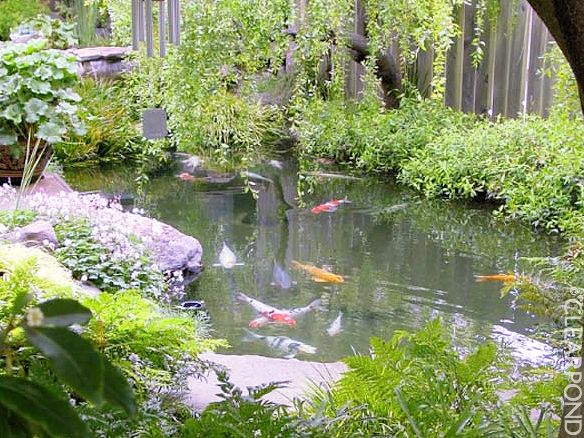
Five Reasons You Need To Aerate Your Pond Or Lake
By Clearpond|June 24, 2015
When it comes to ensuring the long-term viability of your pond or lake, the most crucial success factor is proper aeration. Aeration plays a major role in many aspects of aquatic life including helping with filtration, algae control and improving fish health and is especially important during the summer months.
Let’s take a look at five of the main reasons why ponds and lakes need to be aerated as well looking at a few of the most common methods used for this purpose.
Oxygenation
The most important reason for aerating ponds and lakes is to increase the level of oxygen in the water. Without getting too technical, aeration increases the amount of gaseous oxygen that is dissolved in the water - which is critical for healthy fish and plant life. Basically, fish need oxygen to survive and a suitable aerator can prevent fish kills that happen as a result of low oxygen levels.
Reduces smell
When oxygen levels are low, noxious odours can result from the presence of hydrogen sulphide. This is caused by an anaerobic process of breaking down of organic matter instead of a faster aerobic process, which is speeded up by the presence of oxygen.
A good aeration system will stimulate the growth of beneficial aerobic pond bacteria which break down waste and process pollutants - especially the layer of solid muck that accumulates at the bottom of ponds and lakes.
Creates currents and improves circulation
Aeration is necessary to supplement the natural ‘turnover’ cycle that happens during autumn and spring when water with a low oxygen content from the bottom of the pond mixes with oxygenated surface waters. By increasing this turnover rate to several times a day, the water isn’t able to stratify and healthier habitats for fish and aquatic wildlife are created. Another important factor is that aeration also creates currents in the water, which is also important for a healthy aquatic environment.
Reduces surface tension
An aerator will also dramatically reduce the surface tension of the water and create waves which increase the total surface area of the water. This in turn facilitates greater absorption of oxygen because of the increased surface-to-air contact.
Reduces need for lake maintenance products
Because aeration systems enhance a pond or lake’s ability to regulate itself, the requirement for maintenance products will be reduced. For example, a body of water that is correctly aerated will have fewer problems with algae growth and therefore would require less chemical intervention.
Simply put, without sufficient oxygen, a pond or lake will struggle to remain healthy. However, there are many different forms of aeration methods for both the surface and the bottom of ponds and lakes, including air pumps, application-specific submersible pond, fountain, waterfall & filtration pumps from OASE, air compressors, blowers, paddle-wheels, windmill aerators and fountains.
However, it’s important to note that each application should be assessed individually and factors such as the size of the water body, the depth, temperature, salinity, fish population, power supply, aesthetics and of course, budget all need to be taken into consideration.
Deciding on what aeration system to go for may seem like one of those situations where too much information is overwhelming, but with advice from experts, the way forward will be much clearer. So, if you have a water feature that is giving you problems or you want to discuss aeration options with a professional lake management consultancy firm, then the website is well worth a visit. It contains comprehensive information on all types of aeration systems as well as an extensive ‘How To’ section with loads of FAQs which covers all aspects of pond and lake management.
Let’s take a look at five of the main reasons why ponds and lakes need to be aerated as well looking at a few of the most common methods used for this purpose.
Oxygenation
The most important reason for aerating ponds and lakes is to increase the level of oxygen in the water. Without getting too technical, aeration increases the amount of gaseous oxygen that is dissolved in the water - which is critical for healthy fish and plant life. Basically, fish need oxygen to survive and a suitable aerator can prevent fish kills that happen as a result of low oxygen levels.
Reduces smell
When oxygen levels are low, noxious odours can result from the presence of hydrogen sulphide. This is caused by an anaerobic process of breaking down of organic matter instead of a faster aerobic process, which is speeded up by the presence of oxygen.
A good aeration system will stimulate the growth of beneficial aerobic pond bacteria which break down waste and process pollutants - especially the layer of solid muck that accumulates at the bottom of ponds and lakes.
Creates currents and improves circulation
Aeration is necessary to supplement the natural ‘turnover’ cycle that happens during autumn and spring when water with a low oxygen content from the bottom of the pond mixes with oxygenated surface waters. By increasing this turnover rate to several times a day, the water isn’t able to stratify and healthier habitats for fish and aquatic wildlife are created. Another important factor is that aeration also creates currents in the water, which is also important for a healthy aquatic environment.
Reduces surface tension
An aerator will also dramatically reduce the surface tension of the water and create waves which increase the total surface area of the water. This in turn facilitates greater absorption of oxygen because of the increased surface-to-air contact.
Reduces need for lake maintenance products
Because aeration systems enhance a pond or lake’s ability to regulate itself, the requirement for maintenance products will be reduced. For example, a body of water that is correctly aerated will have fewer problems with algae growth and therefore would require less chemical intervention.
Simply put, without sufficient oxygen, a pond or lake will struggle to remain healthy. However, there are many different forms of aeration methods for both the surface and the bottom of ponds and lakes, including air pumps, application-specific submersible pond, fountain, waterfall & filtration pumps from OASE, air compressors, blowers, paddle-wheels, windmill aerators and fountains.
However, it’s important to note that each application should be assessed individually and factors such as the size of the water body, the depth, temperature, salinity, fish population, power supply, aesthetics and of course, budget all need to be taken into consideration.
Deciding on what aeration system to go for may seem like one of those situations where too much information is overwhelming, but with advice from experts, the way forward will be much clearer. So, if you have a water feature that is giving you problems or you want to discuss aeration options with a professional lake management consultancy firm, then the website is well worth a visit. It contains comprehensive information on all types of aeration systems as well as an extensive ‘How To’ section with loads of FAQs which covers all aspects of pond and lake management.



